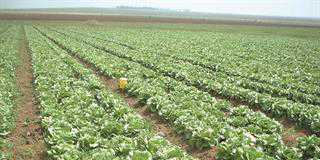Several years ago, Joburg Market resurfaced the floors in its three sales halls. I understood that this was to bring it in line with HACCP standards. Although the job was tackled section by section to minimise the impact, trading was seriously disrupted.
I have no idea if the HACCP accreditation was achieved or if the resurfacing of the floors was simply a first step in that direction, and the question remains: what about all the other requirements for HACCP? The problem is that we’re talking about buildings well past their sell-by date.
Tackling the gigantic and sorely needed task of upgrading infrastructure while complying with food safety standards to bring markets in line with modern fresh produce requirements would be almost prohibitive.
Knock down and start again
Recalling the markets in Namibia (see this column in Farmer’s Weekly of 9 October 2015), there can be
only one answer to the dilemma: start over and build new markets. I appreciate that this is easier said than done and in some cases almost impossible to implement.
The Project Rebirth people are aware of this and food safety is on their ‘upgrade agenda’. Having a good intention is one thing; making it happen in reality another entirely. As I have said often before, as long as markets remain under municipal control, the chances of success are slim. Progress might be made with the larger markets but the challenge remains daunting for all, and I find it difficult to imagine the small markets rising to the high standards required for food safety. As it is, many of them are unable to apply even the most rudimentary hygiene requirements.
Producer perspective
Seen from a producer’s perspective, this lack of food safety standards on markets is highly problematic. Many farmers are themselves HACCP-accredited and adhere to other strict protocols to meet export requirements. Why should they subject their fruit to markets where no such standards exist?
Most importantly, through the retailers who buy on the markets, consumers are increasingly demanding that food safety standards be applied.
Where does this leave the markets?












